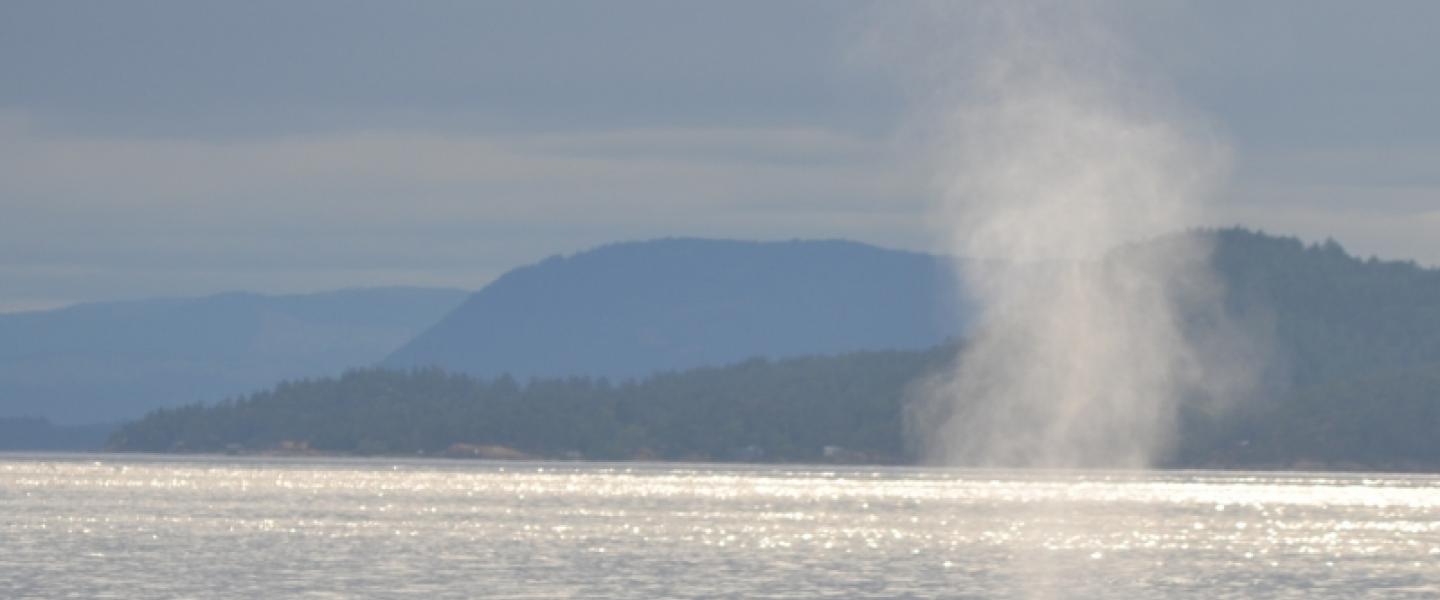
1. Humpback Whales Are Huge!
The humpback whale (Megaptera novaeangliae) is the 5th largest of the great whales. An adult humpback whale can grow to 60 feet in length and weigh up to 80,000 pounds. As with most baleen whales, female humpback whales are larger than males. The largest recorded humpback whale was a female estimated to be 89 feet long and nearly 200,000 pounds.
Also known as the “big-winged New Englander,” humpback whales are most recognized for their disproportionally large pectoral fins. Measuring up to 15 feet long, the humpback whales’ long pectoral fins can even be used to swim backwards. The pectoral fin length can be as long as 1/3rd of the overall body length.
Humpback whales are huge even at birth! At birth, a newborn humpback whale weighs 2000 pounds and is 20 feet long, approximately the length of the mother’s head.
Many humpback whales encountered in the San Juan Islands are adult females with a new calf, or juvenile male or female whales. Recently, the very well-known humpback whale “Big Mama” returned to the Salish Sea with a new calf in tow, making this her 6th known humpback calf.
2. Humpback Whales Are Hungry
Weighing in at nearly 2,000 pounds at birth, hungry newborn humpback whales will consume up to 600 Liters of their mother’s milk each day in order to build a substantial blubber layer. The newborn humpback calf relies solely in its mother’s 50% fat milk for the first 5 to 7 months of life. Subsequently, the calf will start to supplement krill and other small fish into the diet before weaning is completed by 10 months of age.
Adult humpback whales have varied feeding methods including bubble netting and lob-tail feeding to consume shrimp-like organism (krill), plankton, and small fish. The humpback whales most commonly sighted in the Salish Sea use the “lunge-feeding” technique, in which they engulf entire ball of small schooling fish, often herring. Then, the humpback uses its large (and we mean large! It’s the size of a Volkswagen Bug vehicle!) to push sea water through the baleen and essentially straining the fish into its mouth.
Adult humpback whales only feed during their summer months in the Arctic Ocean. To prepare for their annual migration to their warm water wintering grounds, humpback whales consume up to 3,000 pounds of food per day.
Kevin Culmback
3. Humpback Whales Are Hairy
Humpback whales have two different types of hair; baleen and tubercles.
Baleen is the hair-like substance filter feeding system inside the mouth of the humpback whale. Just like human hair and nails, baleen is made of keratein. The baleen, which has a straw-like texture, is arranged in rows across the upper jaw of the whale. The filter feeding system works when the whale takes in sea water through its mouth. Then, the whale pushes the water out through the baleen, trapping tiny crustacean, fish, and krill in the bristle.
Tubercles are fist sized bumps located on the rostrum, or nose, of the humpback whale. Each bump contains on hair follicle that is connected to a complex sensory system of nerves. While current science is inconclusive on what function the system of nerves performs, researchers speculate that the hair follicle may:
- detect temperature change
- detect the presence of prey
- increase hydrodynamic
- increase agility
Only future research will determine the true function of these tubercles!
4. Humpback Whales are in it for the Long Haul
Humpback whales most often encountered in the greater Puget Sound region are members of the Eastern North Pacific stock. These whales leave the waters of Alaska in autumn, and travel nearly non-stop for up to eight weeks to reach their warm water wintering grounds in Hawaii or Mexico. Their annual migration of up to 6,000 miles (3,000 miles each way) is one of the longest of any mammal.
In 2010, a lone female humpback whale migrated from the east coast of Brazil to Madagascar, on the east coast of Africa. This 6,200 mile trek broke previous migration records.
5. Humpback Whales Are Here in the San Juan Islands!
Sightings of humpback whales in the Salish Sea were very rare through the 1980s and 1990s. 2003 marked the year in which humpback whales began to return to the waters surrounding San Juan Island with consistency. Since then, sightings of humpback whales increased significantly in British Columbia and Washington State waters including the San Juan Islands, Georgia Strait, the Strait of Juan de Fuca, and Haro Strait.
In 2015, approximately 50 unique humpback whales were sighted in the Salish Sea. More humpback whales are expected to travel through the San Juan Islands every year and we couldn’t be more excited to see who visits the Puget Sound region next!